#classic swedish films
Explore tagged Tumblr posts
Text
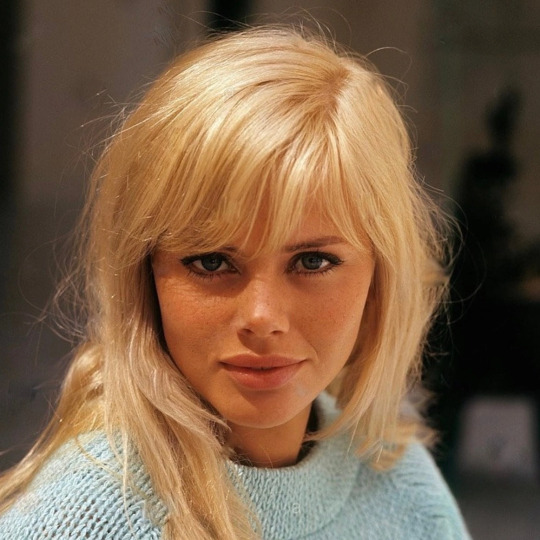
Britt Ekland
#classic#vintage#iconic#classic hollywood#old hollywood#classic icon#icon#vintage hollywood#classic beauty#beautiful#swedish actress#britt ekland#1960s#1960s movies#1960s history#1960s vintage#1960s cinema#1960s films#vintage old Hollywood#vintage woman
832 notes
·
View notes
Text





smultronstället (1957) dir. ingmar bergman
#wild strawberries#smultronstället#50s vintage#50s films#cinema#film stills#film#vintage films#classic films#film quotes#black and white#black and white film#swedish cinema#swedish film#film quotations#film aesthetic#sad quotes
209 notes
·
View notes
Text

source: Muppets Most Wanted (2014)
#Muppets Most Wanted#Swedish Chef#The Seventh Seal#how about a film#existential conundrum#religious faith#how about a film about the existential conundrum of religious faith#classic film
37 notes
·
View notes
Text

Aud Egede-Nissen in Dimitri Buchowetzki's Karusellen (1923)
#aud egede-nissen#karusellen (1923)#dimitri buchowetzki#1920s#20s movies#classic film#silent film#swedish cinema#imageedit#imagestill#vintage beauty#my post
29 notes
·
View notes
Text

#the seventh seal#ingmar bergman#max von sydow#classic films#classic movies#classicfilmcentral#classicfilmblr#classicfilmsource#classicfilmedit#dailyflicks#filmdaily#cinemaspam#cinemapast#swedish cinema#nostalgia#vintage#retro#quotes
13 notes
·
View notes
Text
"Why does God hide in the midst of vague promises and invisible miracles?"
(image from IMDb)
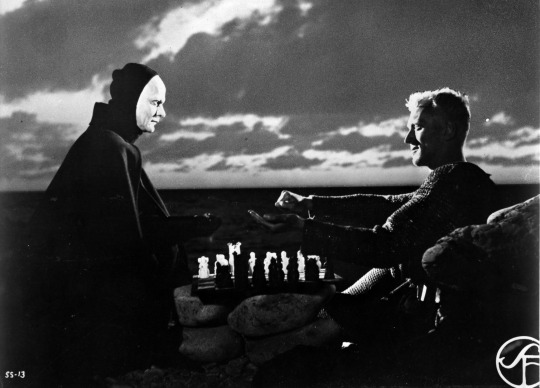
At a first glance, "The Seventh Seal" is a movie about religion, about God and Faith and about Death.
Well, it's undeniable that the movie IS about all these things. The movie does deal with these themes at a superficial glance. But I find that it is more about the grasp that religion has on society and on its people.
The Seventh Seal, directed by Swedish Director Ingmar Bergman in 1957, is a film narrating the story of Antonius Block, a night during the Middle Ages who just returned to his homeland from the Crusades. On his journey back home, he encounters an unlikely companion; Death himself. Initially terrified by the nature of his new friends, he asks to play a game of chess with him, and if he wins, he gets to live. But if he loses, Death can take him away.
This analysis is going to contain spoilers (though, if you're a Bergman watcher, you're probably not one to be afraid of spoilers).
The movie more about the absurdity of life than it is about anything else. The audience watches as Antonius Block gradually loses his faith in God as the game of chess with Death unfolds. He fearfully hopes that, if he dies, the heavens will open for him and welcome him. He wants to believe that. But as everything around him falls to ruin and the Plague torments his hometown, he starts to lose his hope for a better future and for the illusion of heaven.
If God truly does exist, why do all these horrible things happen? Why is there more suffering than there is beauty in life? These are the questions that torment Antonius block as he sets off on his journey back home.
While Antonius Block is meant to represent the type of person who attempts to resist carnal desires and tries to maintain his faith in God, which is his whole character arc, his traveling companion, Jöns, is depicted as the complete opposite. Jöns is a man who has embraced hedonism and his raw desire and lust for life. He represents the character model of a person who has released himself from every moral compass and is purely led by his emotions and desires. He represents the opposite of Block; he is what Antonius Block is trying not to be.
However, in the grand scheme of things, when Antonius Block and all his companions face Death in the end of the film, Jöns is the only one who truly appears to not be afraid. Even if Antonius Block knew his death was imminent and had him by his side the whole time, and even if Antonius Block was the one trying to convince himself of the existence of Heaven and God, Jöns was the one who was calm. His character arc was foreshadowed from the beginning of the film, where he said one of my favorite quotes when encountering a dead man: "No, sire. As a matter of fact, he was quite eloquent. Though what he had to say was rather gloomy." Death, to him, is a part of life. He sees life and its existence as a series, and death in the end is not only normal, but beautiful. It is, as he says, "eloquent." This raises questions about the effectiveness of religious faith. Religions were created to combat people's fear of death, but do they really manage to do that? In the end, only a truly liberated person, line Jöns, is able to distance himself from the fear of his demise.
On his way home from the crusades, he and his companion encounter a young couple of street performers, Jof and Mia, with their infant son Mikael. The two of them don't let the suffering around them break them. They don't let it ruin their love for each other and their love for art. They're as happy as they've ever been, and religion, death, God are only in the back of their minds. Antonius Block meets the couple, and he sees how their art is the beauty in their lives. Many have explained how art is like an escape from death, from the suffering, and how it can shelter someone and their life from the harsh realities of it. That's how the couple sees their life. They see it through the lens of an artist. They are carefree and in love with each other and with their art, and Block sees this. They symbolize art and freedom in the midst of a world that opposes it all. In the end, they're the only ones who are saved. Unlike Jöns and Antonius Block, they had a shelter, a raison d' être. And Antonius Block saw that. In the final part of the game that Antonius plays with Death, he tries to elongate it as long as possible so that the couple has enough time to flee and escape their demise. This gesture goes to show a lot both about art and Antonius Block's character development.
Antonius Block wants to gain time for the couple to flee and time for him to go back to his mother. He loses the game, but he already knew he would've. He knows that the next time he'll see Death, it will be his last. It shows that, from his part, he has accepted the fact that he will die, and he knows that everyone else in his companionship apart from the couple don't have a reason to stay alive anymore. Jöns has given up on everything, and he himself has nothing more to live for. So, he tries to accept his own death while giving life to those who truly deserve and need it.
And yet, when the time comes, he's unable to accept it. He still leans back to pray in hopes that "God" will save him, if "God" exists. This poses the question how difficult is it to let go of faith that has overrun your whole life? You've given your whole life to your faith, maybe you've been indoctrinated by it. Even if you lose it, it never truly goes away, does it? It can definitely be inferred that, after everything Antonius Block saw, after seeing how cruelly the church treated the woman who was accused of being a witch, and after asking the accused witch whether or not she had seen the Devil, he, too, had left behind his faith. He had liberated himself from religion and his belief, but in the final moments, he still hoped for it. This says a lot about society and about generational trauma and indoctrination regarding religion. Even when someone has freed their own self from its grasp, is it really that easy to be free? Is all you need to do denounce it to rid yourself of this ideology that has loomed over your whole life? Ingmar Bergman believes it's not, and this is what Antonius Block represents.
The final scene is the dance macabre. A classic way in which death is symbolized in medieval literature and theater. Jof sees all of his friends dance away from the dawn, away from the light, and towards eternal darkness, which is Death. Yet, it's only in the distance. It's in the back of his mind, and Mia doesn't even see it. Art and love can shelter someone from death and suffering, and it has sheltered Jof, Mia and Mikael.
The movie has been criticized for being too unsubtle. Yeah, it might be one of the unsubtlest Ingmar Bergman works, but it goes without saying it's still a masterpiece. I could denounce this elitism in art anytime; why does everything need to be so sophisticated? Art doesn't need to be extremely deep or incomprehensible. Though, don't get me wrong, I do love more complicated pieces of media, and ones that need a LOT of analysis to actually understand, but appreciating such works does NOT mean denouncing any work that doesn't fit into those criteria. Does Bergman have better works? Yes. Does this cancel out the greatness of The Seventh Seal? No. I'd say it's quite the contrary; The Seventh Seal is the perfect movie to start for Bergman beginners, or for those who want to begin watching philosophical movies for the first time. So, no, I won't accept any kind of intellectually elitist criticism of this film (or any film, for that matter).
A beautiful yet complex movie. It is so easy for someone to watch a movie and seek answers. However, this movie does not give any answers. It poses questions. Questions that one must be willing to ponder in order to watch this movie. Brilliant cinematography combined with deeply philosophical themes, current even 67 years after the creation of the film. After all, this is what makes a beautiful work of art, isn't it? The provocation of thoughts and themes that transcend the context of its original time.
11 notes
·
View notes
Text
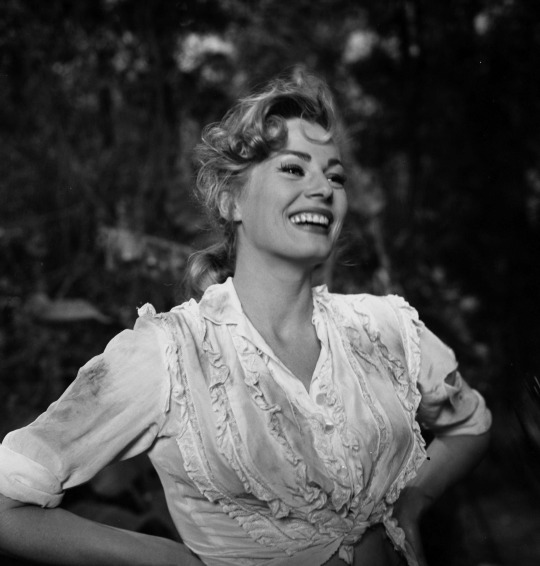
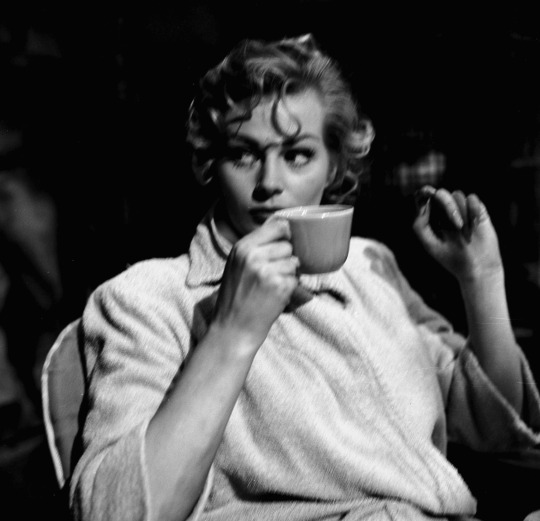
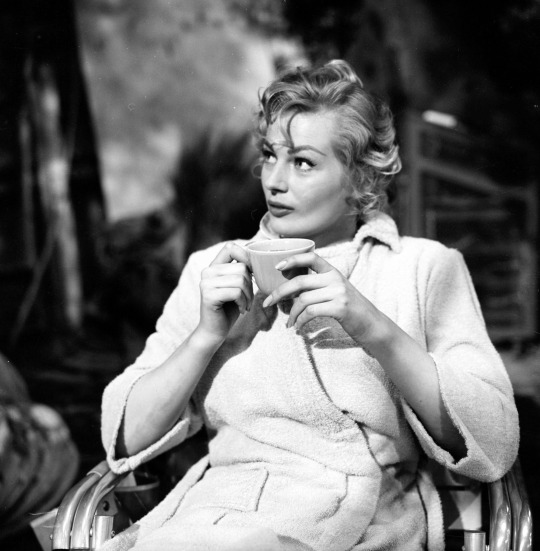
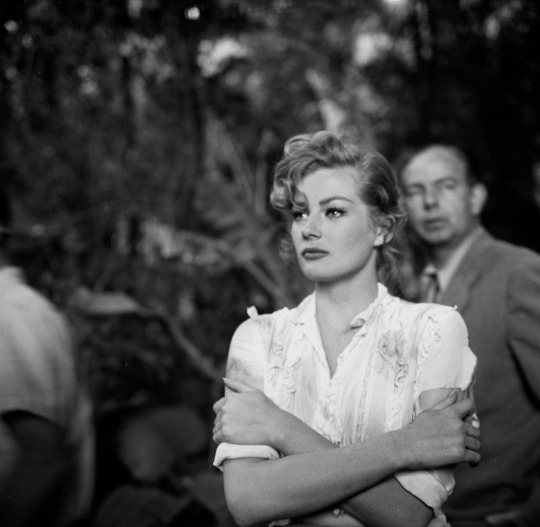
Anita Ekberg on the set of Back from Eternity (1956).
Photographed by Earl Leaf on April 6, 1956.
#1950s#anita ekberg#mine#films#old hollywood#earl leaf#old hollywood glamour#vintage style#vintage fashion#old movies#old movie stars#classic hollywood#swedish cinema#italian cinema#old hollywood actress#60s 70s 80s 90s#1950s vintage#1950s cinema#1950s style#50s#50s fashion#50s icons#1950s movies#50s movies#1950s hollywood#1950s fashion
129 notes
·
View notes
Text

Liv Ullmann
64 notes
·
View notes
Text
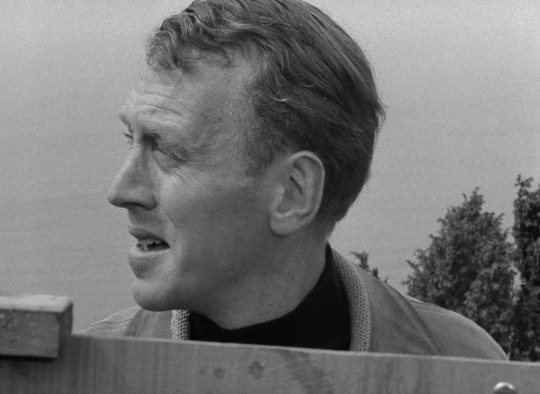
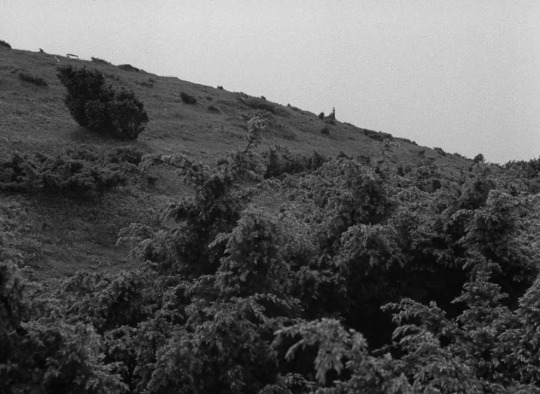
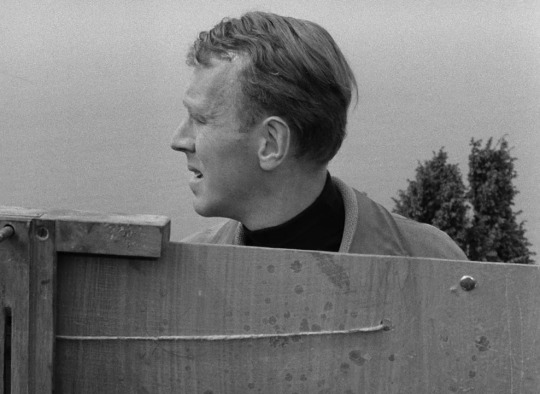
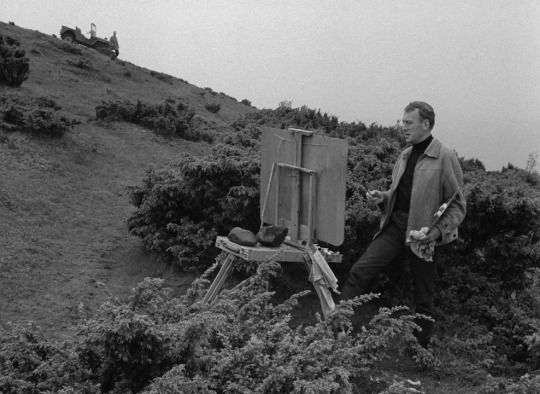

Vargtimmen | Hour of The Wolf (1968), dir. Ingmar Bergman
#horror#vargtimmen#hour of the wolf#ingmar bergman#max von sydow#classic#classic cinema#classic film#bw#monochrome#black and white#black & white#black and white cinema#swedish#swedish cinema
20 notes
·
View notes
Text






Persona (1966) Directed by Ingmar Bergman
#Persona#Drama#Psychological Drama#Ingmar Bergman#Liv Ullmann#Bibi Andersson#1966#Cult Classic#Art House Film#Swedish Cinema#Existential Cinema#Classic Film#Minimalist Cinema#Mind Bending#Vintage Cinema#Philosophical Drama#movie#film#60s#60s nostalgia#60s film
6 notes
·
View notes
Text
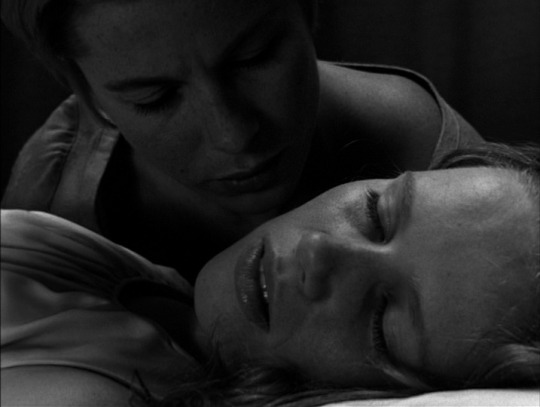
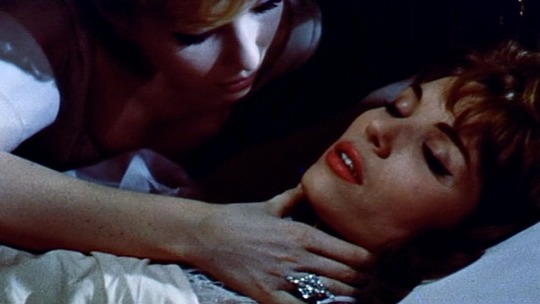
persona x et mourir de plaisir
#persona 1966#blood and roses 1960#film#1960s#old hollywood#costume design#60s film#liv ullmann#bibi andersson#annette stroyberg#elsa martinelli#roger vadim#ingmar bergman#fashion#women#french cinema#swedish cinema#black and white#classic#fantasy#cinematography#vampire#vintage#carmilla karnstein
12 notes
·
View notes
Text
January Plans 📰🛋️❄️
Books 📚:
Great Expectations by Charles Dickens
The Answer Is No by Fredrik Backman
Conceal, Don’t Feel by Jen Calonita
Films 🎥 :
A Man Called Ove dir. Hannes Holm
He Loves Me He Loves Me Not dir. Laëtitia Colombani
Moulin Rouge dir. Baz Luhrmann
My Octopus Teacher dir. Pippa Ehrlich, James Reed
#books and film#book blog#book tbr#film watchlist#classic literature#academia#charles dickens#fredrick backman#disney books#twisted tales#films#documentary#octopus#musicals#musical film#french film#swedish film#book planning#books and movies#book suggestions#January TBR#bookblr#filmblr#🦇
2 notes
·
View notes
Text
Greta Garbo - The Face of the Century

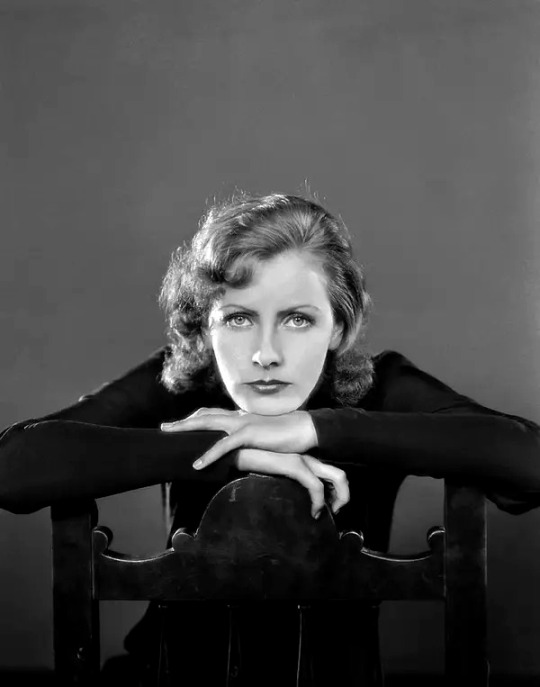


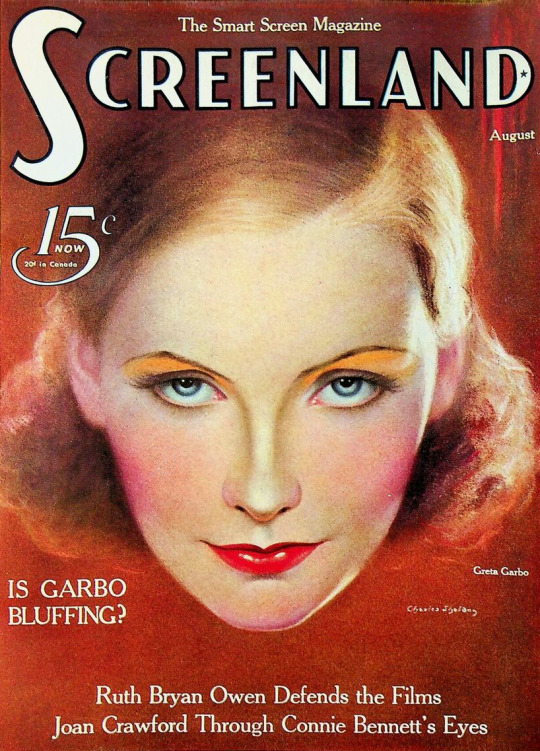


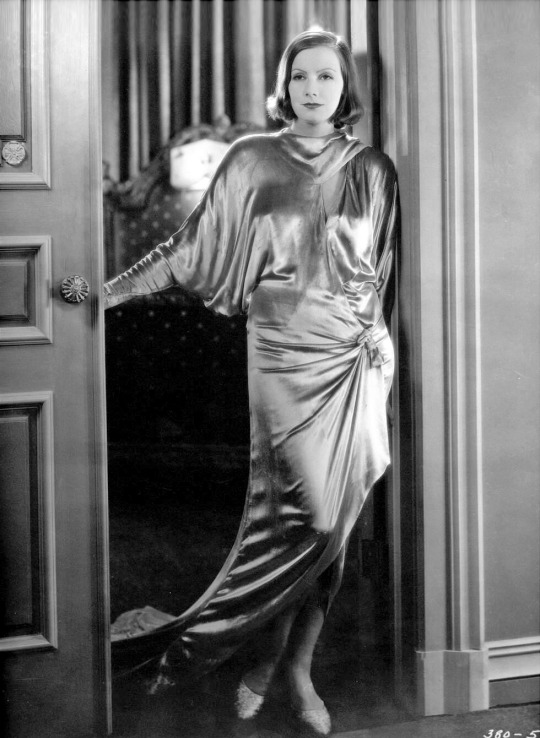

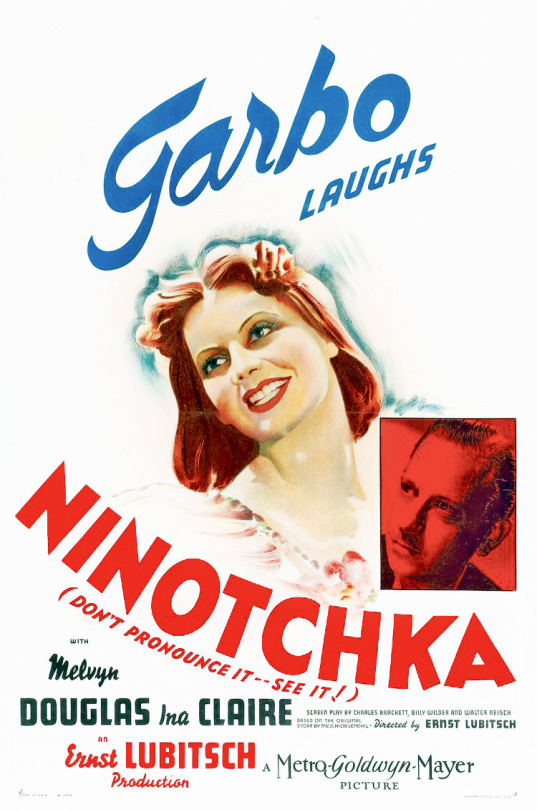


Greta Garbo (born Greta Lovisa Gustafsson in Stockholm, Sweden on 18 September 1905) was a Swedish-born actress who built her global appeal on a carefully maintained mystique during her short career. Called "The Face of the Century," she is regarded as one of the Hollywood's greatest beauties.
Garbo was born into a poor family and dropped out of school at 13 to take care of her father. His death deeply affected her and promised to make a life for herself that was void of financial hardship.
Following her father's death, Garbo worked as a salesperson at PUB department store. After modeling for the store's catalogues, she earned a more lucrative job as a fashion model, which led to a role in her first film in 1922.
She then earned a scholarship at the Royal Dramatic Training Academy, where she met Finnish director Mauritz Stiller, who became her mentor. Louis B. Mayer of Metro-Goldwyn-Mayer wanted Stiller in Hollywood. The director agreed to a contract with one condition: Garbo. Reluctantly, Mayer inked her a deal, too.
She made her first MGM film in 1926, and by 1928, had become MGM's highest box-office star with A Woman of Affairs. She followed it up with several more hits, including Camille (1936). Her career slowed down in the 1940s and retired at 35.
After retiring, Garbo declined all opportunities to appear onscreen, shunned publicity, and led a private life. She died, aged 84, in New York, as a result of pneumonia and renal failure.
Legacy:
Nominated three times for the Academy Award for Best Actress for her performances in Romance (1930), Camille (1936), and Two-Faced Woman (1941)
Presented an Academy Honorary Award in 1955
Received the New York Film Critics Circle Award for Best Actress twice: Anna Karenina (1935) and Camille (1936)
Won the National Board of Review Best Acting Award three times: Camille (1936), Ninotchka (1939), and Two-Faced Woman (1941)
Was the highest-paid star at MGM for most of her career
Won the Photoplay Awards - Best Performances of the Month for a record eight times: May and December 1926, February and November 1927, March and September 1928, and January and March 1929
Won Best Actress for Anna Christie (1930) and Queen Christina (1933) from Picturegoer Awards
Listed by the Motion Picture Herald as one of America’s top-10 box office draws from 1930 to 1932
Was one of the subjects of French composer Charles Koechlin's "Seven Stars Symphony" (1933)
Granted the Swedish royal medal Litteris et Artibus in 1937
Is one of the celebrities whose picture Anne Frank placed on the wall of her bedroom in the “Secret Annex” in 1942
Voted "Best Actress of the Half Century" in a 1950 Daily Variety opinion poll
Named “the most beautiful woman that ever lived” in 1954 by Guinness World Records
Given the George Eastman Award by George Eastman House in 1957
Has appeared on many postage stamps from, among others, Swedish Posten in 1980 and 2005, Correos de Cuba in 1995, Deutsche Post in 2001, US Postal Service in 2005, Poșta Română issue in 2005, and Australia Post in 2008,
Made a Commander of the Swedish Order of the Polar Star by order of King Carl XVI Gustaf in 1983
Depicted in the film Garbo Talks (1984)
Awarded the Illis Quorum by the government of Sweden in 1985
Had a star was named after her in 1985
Has appeared on commemorative coins from Germany in 1994, France in 1995, and Sweden in 2005
Ranked #38 in Empire's Top 100 Movie Stars in 1997; #25 in Entertainment Weekly’s 100 Greatest Movie Stars of All Time in 1998; #8 in Premiere's 50 Greatest Movie Stars of All Time in 2005 and #25 in 100 Greatest Performances of All Time in 2006 for Ninotchka (1939)
Has had a museum, the Garbosällskapet, dedicated to her in Högsby since 1998
Named the 5th-greatest female star of classic Hollywood cinema in 1999 by the American Film Institute
Inducted in the Online Film and Television Association Hall of Fame in 2002
Chosen in Variety magazine's "100 Icons of the Century" in 2005
Honored by Stockholm City Council in 1992 with a square, Greta Garbos Torg, and a bust of her likeness in 2009
Honored by Norwegian Air Shuttle as its "Tail-fin Hero" on its Boeing 787 Dreamliner in 2016
Featured on 100-krona banknote by Sveriges Riksbank since 2018
Featured in an exhibit at the Postmuseum in 2005, the Belmacz in 2013, the Fotografiska in 2016, the Staley-Wise Gallery in 2016, and Galerie56 in 2023
Honored as Turner Classic Movies Star of the Month for April 2019
Honored with a statue of her, "Statue of Integrity," in 2016, located in the forest in Härjedalen
Has a star on the Hollywood Walk of Fame at 7021 Hollywood Blvd for motion picture

#Greta Garbo#Garbo#The Face of the Century#La Divina#The Swedish Sphinx#Silent Films#Silent Era#Silent Film Stars#Golden Age of Hollywood#Film Classics#Old Hollywood#Vintage Hollywood#Hollywood#Movie Star#Hollywood Walk of Fame#Walk of Fame#Movie Legends#movie stars#1900s#28 Hollywood Legends Born in the 1900s
6 notes
·
View notes
Text



Music in Darkness (1948)
#music in darkness#musik i mörker#mai zetterling#birger malmsten#ingmar bergman#swedish cinema#classic film#romance#1940s#1940s film
18 notes
·
View notes
Text







Wild Strawberries (1957) Directed by Ingmar Bergman
#Wild Strawberries#Drama#Ingmar Bergman#Swedish Cinema#Victor Sjöström#Bibi Andersson#1957#Cult Classic#Existential Cinema#Art House Film#Dreamlike Cinema#Road Movie#Classic Film#Philosophical Drama#Vintage Cinema#Golden Age Cinema#50s#movie#film#50s film
6 notes
·
View notes
Text
On September 18, 1922, Haxan: Witchcraft Through the Ages debuted in Sweden.









#haxan#haxan: witchcraft through the ages#benjamin christensen#horror art#horror movies#pre code horror#horror#silent film#supernatural horror#classic film#1920s#swedish horror#tcm underground#witchcraft#movie art#art#drawing#movie history#pop art#modern art#pop surrealism#cult movies#portrait#cult film
3 notes
·
View notes